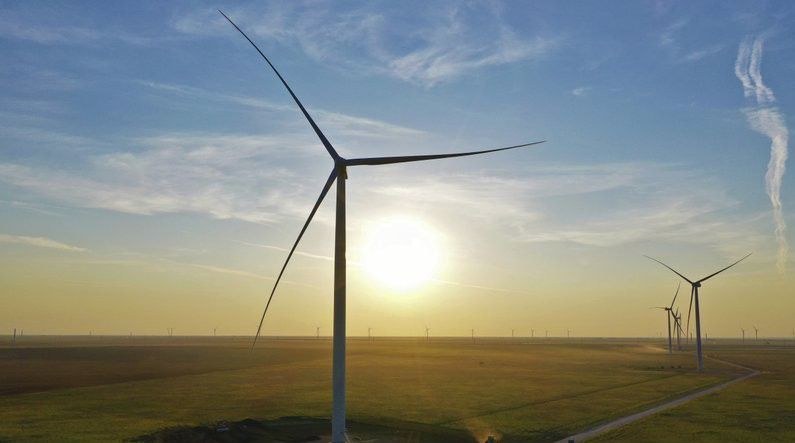ALBUQUERQUE, N.M. — Work is done on a massive wind farm in eastern New Mexico that Xcel Energy officials said Wednesday will move the utility closer to its goal of being carbon-free by 2050 and help cement the Western state’s position when it comes to renewable energy generation.
The 240 turbines that make up the Sagamore Wind Project near the New Mexico-Texas border will be going online at the end of the month following final testing.
The $900 million project spans 100,000 acres (405 square kilometers) and will be capable of producing enough electricity for nearly 194,000 homes. At 522 megawatts, it represents the largest wind farm built to date in New Mexico, the second largest in Xcel’s eight-state system and one of the largest connected to the grid that serves the central United States.
Xcel CEO and chairman Ben Fowke said during a virtual celebration that Sagamore will be a key asset as the Minnesota-based utility pushes toward its clean energy goals. Aside from the 2050 benchmark, the utility is aiming to reduce carbon emissions by 80% by 2030.
“We’re well on our way and by 2024, we expect wind and solar will provide over half of the energy needs of New Mexico and Texas. We’re excited about that,” he said.
Xcel officials said the new wind farm will result in lower costs for customers and will provide hundreds of millions of dollars in lease payments to landowners and tax revenues to the state and local governments over the next 25 years. That includes $101 million in property taxes and $44 million in gross receipts taxes.
Utility officials said Sagamore caps a three-year effort to boost regional wind generating capacity by 1,250 megawatts. Most of that was constructed and is owned by Xcel, including the Hale Wind Project north of Lubbock, Texas. The utility also has power purchase agreements with other wind farms in the region.
While it doesn’t have any immediate plans, Xcel hinted that it’s next foray into renewable energy will likely involve solar. Company officials described New Mexico as ripe for large-scale photovoltaic development.
New Mexico Gov. Michelle Lujan Grisham said aside from the economic benefits, Sagamore represents another step as the state looks to shift electricity generation from coal and natural gas to wind, solar and battery storage over the coming decades. A landmark energy law championed by the first-term Democratic governor calls for utilities to be carbon-free by 2045.
Xcel officials said much consideration is going into making that transition, acknowledging the economic consequences for communities when coal-fired power plants and other fossil fuel facilities are shuttered.
David Hudson, president of Xcel in New Mexico and Texas, said it will be some time before the world can ween itself off fossil fuels. He noted that natural gas will still be needed to back up renewable sources such was wind, which can be intermittent, and there are limits to electric vehicles that make them less practical in rural areas, for example.
Utility executives also pointed to the need for more transmission infrastructure and favorable tax policies, saying both will help to boost future investment in renewable energy development.
